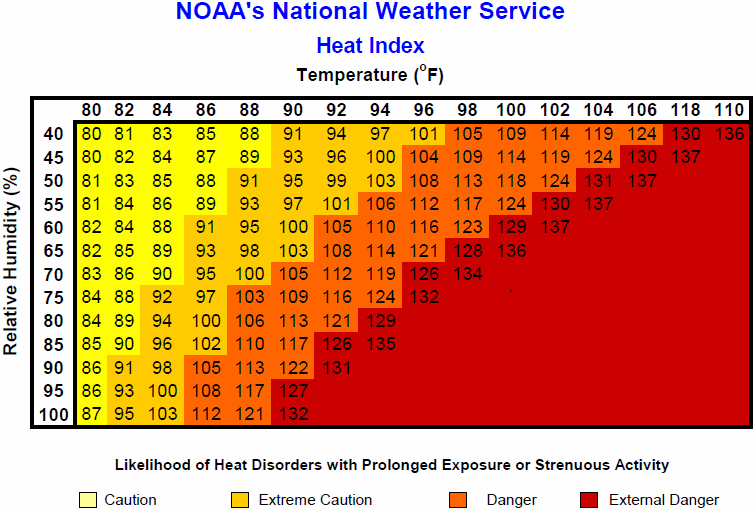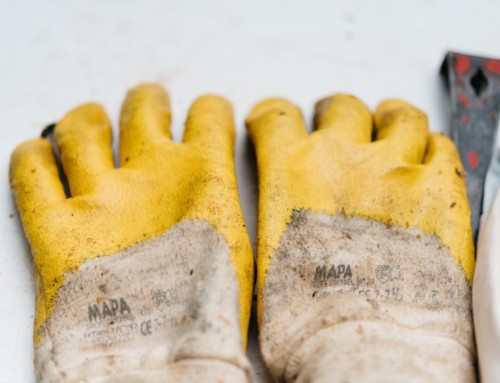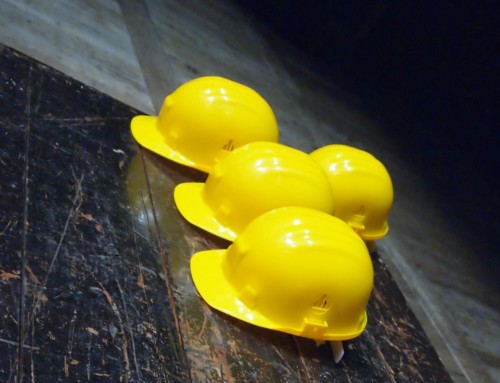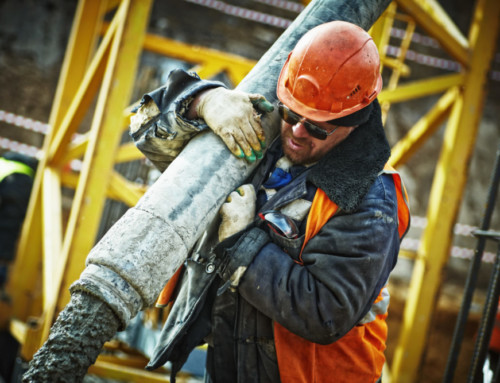Safety protocols are easy to enforce when it comes to operating heavy machinery, sharp tools, and chemicals. But implementing safety protocol to keep workers safe from the heat of summer isn’t always as straightforward. Follow these guidelines to get seasonal heat-related hazards worked into your safety plan.
Heat is a Hazard
The first and most important part of implementing heat protocol into your safety plan is understanding that heat is a hazard.
South Carolina was the second highest state for injuries caused by heat exposure in 2015, and the construction industry in general accounts for more than 40% of heat-related worker deaths. But that doesn’t mean other industries are immune, no matter what industry you operate in if your workers are exposed to high heat you need to be prepared.
Air Temperature, Humidity and Heat Index
Keeping workers safe means preparing properly for the day. This starts by checking the air temperature. But temperature alone will not give you a proper indication of the day’s heat. Looking at the humidity is crucial, a dry heat presents different challenges than a day with 70% humidity.
The Heat Index takes away the calculation of air temp and humidity and offers you one single value representing both air temp and humidity. The higher the Heat Index, the hotter it will feel.
When prepping for the day, make sure to consider the Heat Index value to get the most accurate weather reading. The National Weather Service has a Heat Index chart and other tools to help you plan properly.
Heat-Related Injuries & Illnesses
Each employee and supervisor should get familiar with the most common types of heat-related injuries and illness to make detection easier and start treatment as quickly as possible.
Sunburn
Sunburn is often disregarded, however, it is an early warning sign of further complications. Heat-related injuries can escalate quickly, and knowing the early signs will help you prevent a more serious injury.
Signs of Sunburn
- Red skin
- Possible blisters
Treatment
- Move to shade
- Apply, or reapply, sunscreen
- Apply a cool compress to red/blistered skin
Sun Poisoning
Sun poisoning occurs when sunburn is left untreated. Occurring after long exposure to UV rays, the severity of sun poisoning will depend on each person’s sensitivity level.
Signs of Sun Poisoning
- Widespread, extremely itchy, red rash
- Blistering/peeling skin
- Headaches
- Dizziness
- Fever
- Dehydration
Treatment
- Over the Counter steroid cream for blistered/swollen skin
- Over the Counter oral steroids for swelling
- Topical antibiotics
- Medical treatment and prescribed steroids
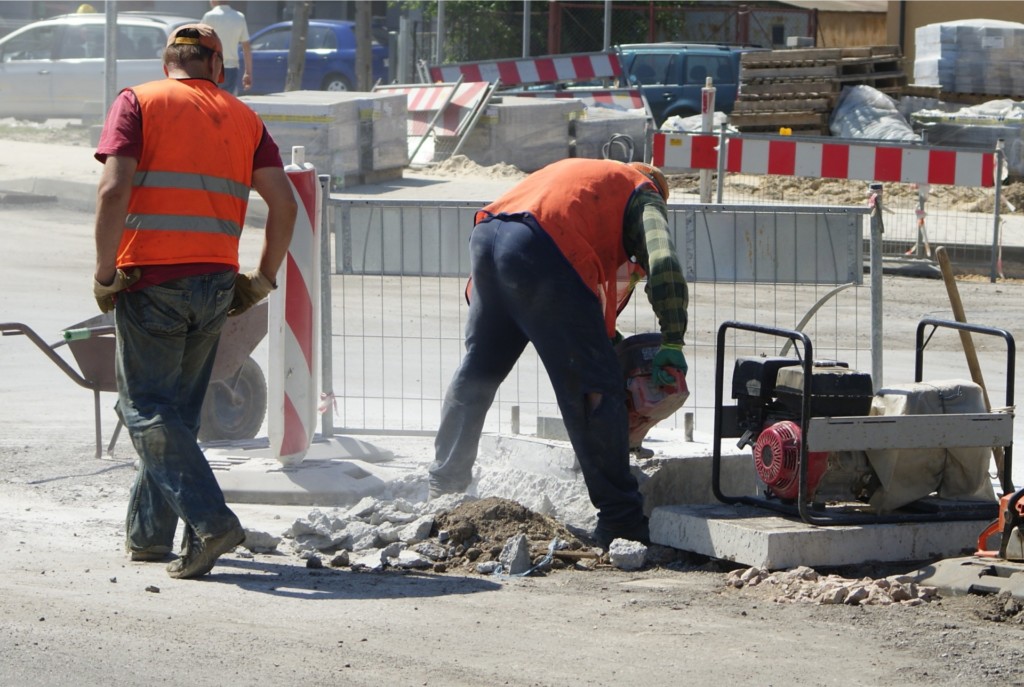
Dehydration
Similar to sunburn, dehydration is often overlooked and not treated causing more severe complications.
Signs of Dehydration
- Loss of dexterity
- Fatigue
- Weakness
- Dry mouth
- Headache
- Increased thirst
Treatment
- Drink water and electrolyte drinks like Gatorade
- Rest in cool, shaded area
Heat Cramps
Heat cramps are muscle cramps or spasms that occur during prolonged and extensive work in the heat. Often, heat cramps are an indicator of severe dehydration.
Signs of Heat Cramps
- Muscle cramps or spasms
Treatment
- Drink water and electrolyte drinks like Gatorade
- Rest in cool, shaded area
- Massage cramped muscles
- Seek medical help if cramps persist
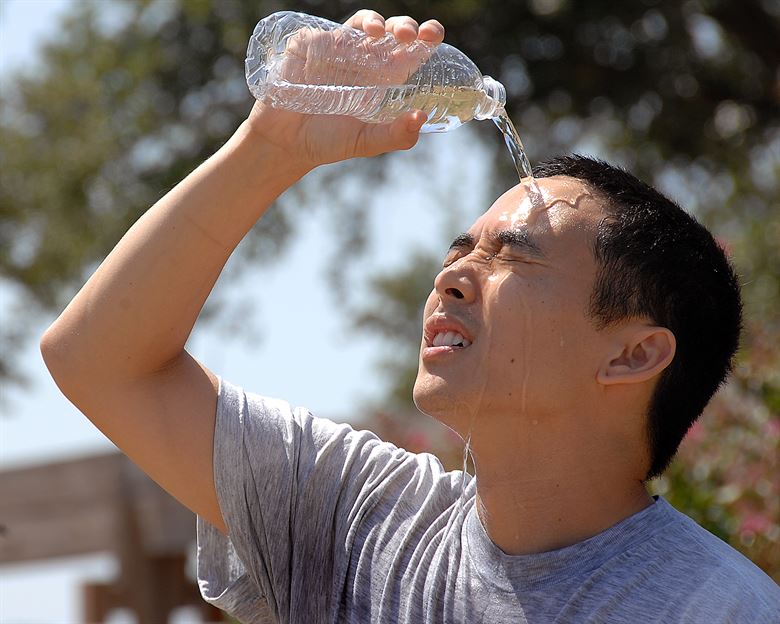
Heat Exhaustion
If dehydration and heat cramps get overlooked, heat exhaustion is often the next progression of heat-related injuries.
Signs of Heat Exhaustion
- Extreme sweating
- Excessive thirst
- Decreased urine output
- Headache
- Nausea
- Confusion and dizziness
- Above average body temperature (but less than 104°)
- Muscle cramps
- Low blood pressure
Treatment
- Move into a cool or shaded area immediately
- Remove tight clothing
- Call emergency response
- Cool with wet cloth
- Drink small sips of water
Heat Stroke
Heat Stroke is the most severe heat-related injury. Caused by prolonged exposure and physical activity in high heat, workers showing signs of heat stroke should be taken to the emergency room as quickly as possible.
Those suffering a heat stroke will have all the same symptoms as those suffering from sunburns through heat exhaustion. It is vital not to misinterpret signs of heat stroke as one of the other heat injuries.
Signs of Heat Stroke
- High body temperature (over 104°)
- Nausea and vomiting
- Rapid breathing
- Headache
- Shivering
- Confusion
- Loss of consciousness
- Seizures
Treatment
- Call 911 emergency response immediately
- Move to cool, shaded area
- Remove or loosen tight clothing
- Cool with wet cloth, mister or cooling fan
- Lay on back and elevate feet
- Drink small sips of water, if conscious
- CPR if needed
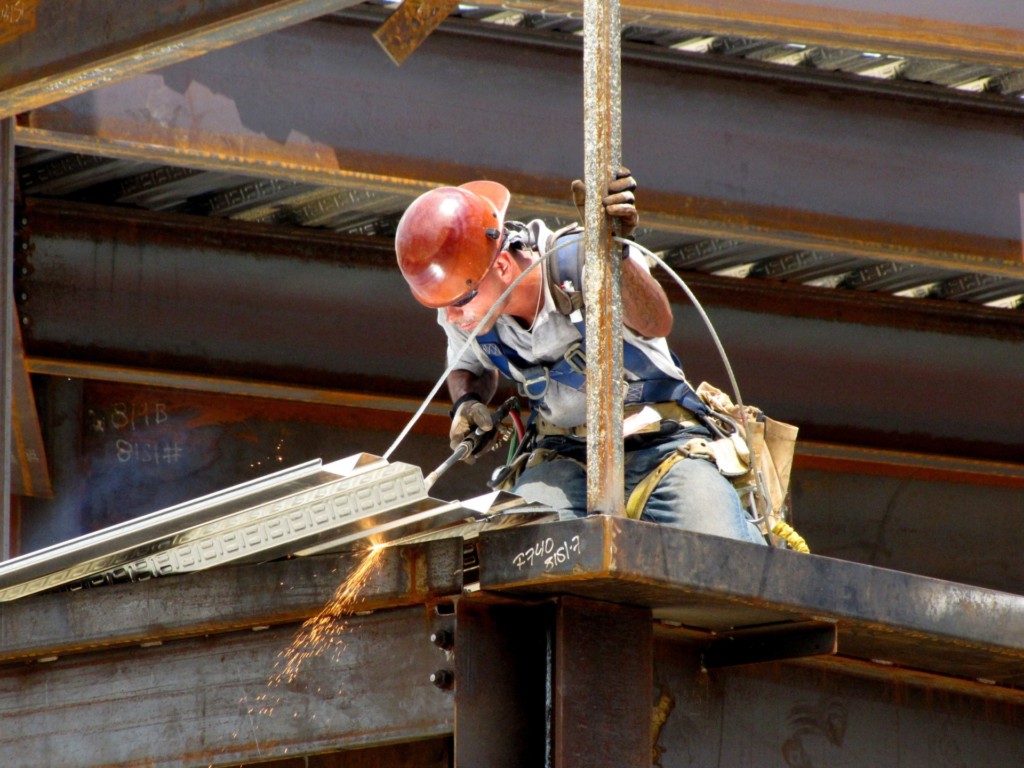
OSHA Law
According to the Occupational Safety and Health Administration, employers are required to:
- Provide workers with water, rest and shade
- Allow all workers to acclimate to the heat with gradual workload increases and more breaks
- Monitor crews for heat-induced symptoms
- Create an emergency plan
OSHA provides resources on heat injuries, prevention, and safety tips. You can review the Outdoor Heat Exposure Addendum to the Accident Prevention Plan to get started.
Summer Safety Heat Programs
Employers and supervisors are responsible for making sure each employee is properly trained and aware of all work-related risks, hazards and injuries, and this includes heat injury.
The best way to make sure you and your team are heat injury free is to create and implement a heat safety plan. This can be worked into your current safety plan and resources for employees should be made easily accessible.
You should implement seasonal safety training on heat-related hazards each year. You can also institute several other seasonal changes:
- Pre-shift meetings to address heat and set water break schedule
- Heat index alert system
- Require water breaks on a schedule based on the heat index
- 20-30 minutes for medium
- 15-20 minutes for moderate
- 10-15 minutes for high
- Supply fresh, free and cool water to all employees on the job site at all times
- Buy the right equipment so workers don’t take it off due to heat. Offer tools to help combat the heat such as:
- Cooling towels
- UV protective clothing
- Ventilated hard hats
- Anti-fogging safety goggles
If you need help picking the proper PPE for high heat conditions, contact us today, our specialists are here to equip your team with everything they need to safely get through the summer.



